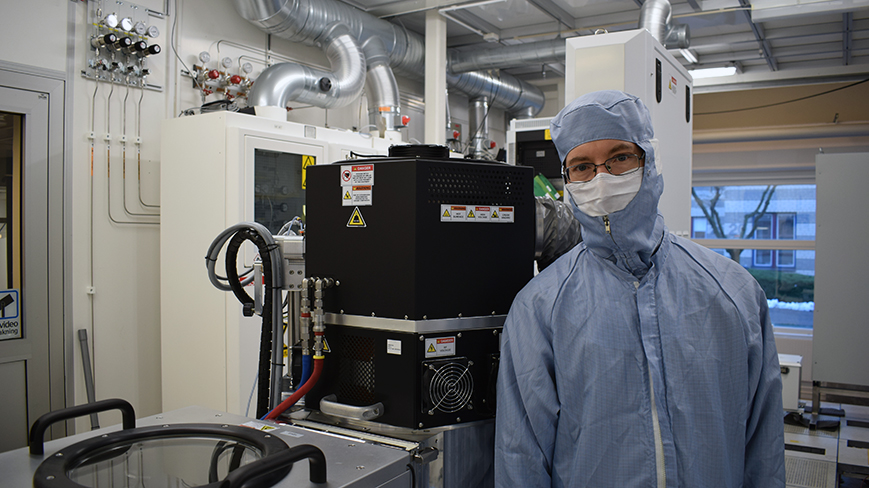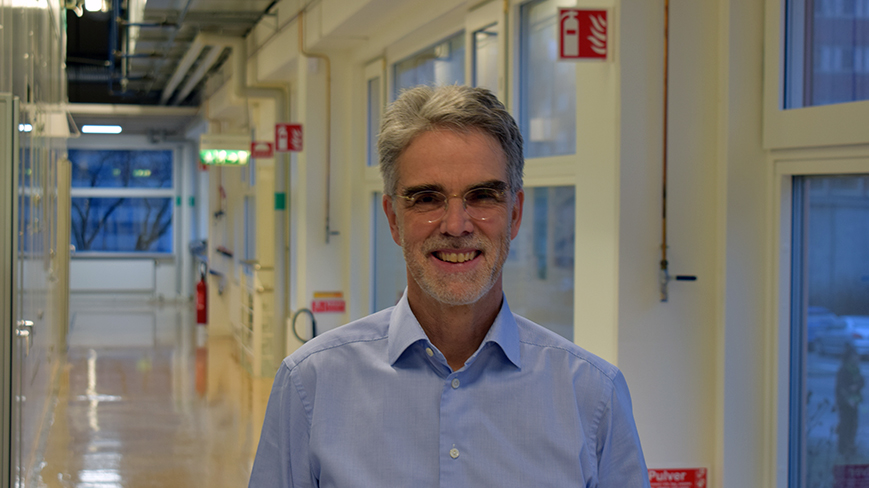"A unique research environment"

The Electrum lab in Kista enables research in microelectromechanical systems, known as MEMS, to grow exponentially.
The research carried out will push the development of, among other things, future weather satellites and life-saving sensors inside cars.
“The Electrum lab research environment is unique,” says Joachim Oberhammer, professor in microwave and terahertz microsystems at KTH. He has used the lab in his research for several years.
Significant benefits
What is unique about the Electrum lab, according to Oberhammer, is that it uses industry-standard processes. These processes have a higher performance level than what is typically found in research environments. This generates significant benefits to a bigger market.
Oberhammer studies high-frequency signals between 70 and 750 GHz that are needed in car radars, telecommunications and weather satellites. He is also looking at the effect microwave radiation has on ecosystem and insects.
In practical terms, the lab creates three-dimensional structures and systems with special functions for high-frequency applications that are etched on silicon wafers. Then they are tested in the terahertz lab, which can measure up to 750 GHz, and has an antenna measuring chamber which allows the test of antennas and radar systems up to 750 GHz. This capacity is unique in Sweden.
”It is essential that we can manufacture microsystems with world-class performance. A professional lab with stability in the manufacturing processes is required, which is only found in industrial production”. The scientific value of having access to such an environment cannot be understated, argues Oberhammer.
A deep-silicon etching system is currently being built in the Electrum lab. This will help Oberhammer and his colleagues’ research even further.
Industry demand
The high frequencies he is studying are also in demand by the industry, especially in telecommunications which always looks for faster data speed and better bandwidth. This is possible with the new signal systems. Although the range is reduced, the size of the antenna systems is smaller, making it possible to allocate them in multiple places.
”Right now, for example, we collaborate with Veoneer , a world leader in automotive safety, on a car radar system that can identify where people sit inside a vehicle and how different body parts move in the event of an accident. The radar can thus tell us how many people are involved in the accident and provide us with information about their condition,” he says. Potentially life-saving research.
Mitigating extreme weather
Another ongoing research is done in collaboration with the European Space Agency. It develops better calibration systems for future weather satellites. The aim is to send up smaller satellites that communicate with each other and can send back updates every 30 minutes rather than every eight hours.
”These satellites weigh less and perform much better satellites will have less weight and better performance. With an increasingly changing climate, this research is fundamental.”
For instance, quicker access to data can help mitigate the effects of extreme weather, similar to the floods ravaging Germany and other countries during the summer of 2021.
”The research we do in the Electrum lab and the clean room there is all about generating benefits that can be applied in society”, says Oberhammer.
Related news

"Without the Electrum lab, we would never have been able to start"
The increasing electrification of various parts of our society goes far beyond securing electricity supplies. It is also about minimising losses and developing an infrastructure that, among other thin...
Read the article
"A unique research environment"
The Electrum lab in Kista enables research in microelectromechanical systems, known as MEMS, to grow exponentially.
Read the article


